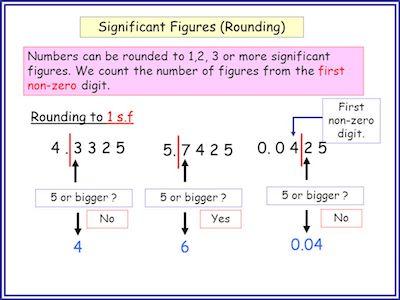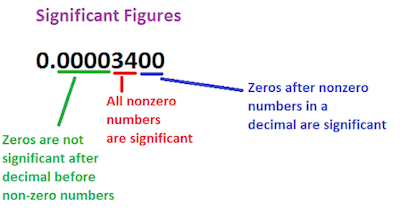Rounding numbers don’t need to b difficult. The truth is that you do it all the time even if you don’t realize it. Nevertheless, there are some specifics that you need to b aware of when you are studying how to round numbers. And one of them is related to significant digits.

Learn everything you need to know about rounding numbers.
What Are Significant Digits?
Simply put, a significant digit is an interesting or important digit that can give you a lot of useful information about a number. If you think about it, it’s not difficult at all to understand this concept. Just think of all the zeroes that are at the right of the whole number or at the left of decimals. These can be discounted since they are placeholders.
Discover how to round numbers to the nearest whole number.
How To Determine Significant Digits?

The truth is that when you are trying to determine the number of significant digits that a number, you will need to count the numbers from the left to the right. Let’s take a look at some examples.
The number 8453 has 4 significant digits just like the number 1425. However, if you look at the decimal 0.04736, you can also say that it has 4 significant digits. On the other hand, the decimal 17508.96 has 7 significant digits.
Check out how to round numbers in Python.
Rounding Numbers To Significant Digits

As you remember, we started by defining significant digits and then we showed you several examples where you could easily determine the significant digits on both whole numbers as well as on decimals. So, now it’s time to learn how you can round numbers to significant digits.
One of the things that you need to always keep in mind is that you will always need to consider the problem that you have in your hands. In some instances, you may want to round a number to 2 significant digits while on other cases, 2 significant digits won’t be enough and you need to round a number to more significant digits.

To better understand how to round numbers to significant digits, it’s always best to check some examples.
Check out this rounding decimals worksheet.
Example #1: Imagine that you want to round the number 5.934 to 3 significant digits.
In this case, you will need to look at the third digit of the number. In this case, you have number 3. Now, to see if you need to round up or down, you will need to take a closer look at the number that is on its immediate right. In this case, you have the number 4. Since 4 is inferior to 5, then you know that you will need to round the number down. So, this leaves you with the rounded number of 5.93.
Example #2: Imagine that you want to round the number 0.03548 to 2 significant digits.
In this case, you will need to look at the second digit of the number. However, keep in mind that this number only has 4 significant digits. So, in this case, you have number 5. Now, to see if you need to round up or down, you will need to take a closer look at the number that is on its immediate right. In this case, you have the number 4. Since 4 is inferior to 5, then you know that you will need to round the number down. So, this leaves you with the rounded number of 0.035.